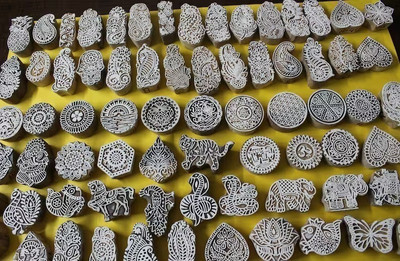Reniq Htag2020 Printing Blocks(Pack of 20)
Quick Overview
Product Price Comparison
Wooden printing blocks are traditional tools used in the art of block printing, a technique that has been practiced for centuries in various cultures around the world. Block printing involves transferring an image or design from a carved block onto paper, fabric, or other surfaces. These wooden blocks are meticulously crafted, combining craftsmanship, creativity, and functionality.The process of creating wooden printing blocks begins with selecting the appropriate type of wood. Various types of wood can be used, such as teak, pine, cherry, or other hardwoods known for their durability and resistance to wear. The wood is carefully chosen for its smooth texture, even grain, and ability to hold fine details.The block carving process is a meticulous and time-consuming craft. Skilled artisans or printmakers use specialized carving tools, such as gouges, chisels, and knives, to carefully carve out the design on the wooden surface. The design can range from simple geometric patterns to intricate motifs, depending on the desired artistic effect.During the carving process, the artisan needs to consider the negative space, as the raised parts of the block will remain unprinted while the carved areas will hold the ink or paint. The depth and precision of the carving are crucial to ensure a clean transfer of the design onto the printing surface.Once the carving is complete, the surface of the wooden block is sanded and polished to achieve a smooth finish. This is important for ensuring even ink distribution and avoiding any unwanted marks or imperfections on the final print.Ink or paint is applied to the block using a brayer, a roller specifically designed for block printing. The brayer is rolled in ink or paint, ensuring an even and consistent coating. The ink is then carefully rolled onto the carved surface of the block, ensuring that all the recessed areas are fully covered.Before printing on the final surface, it is common practice to make a test print on scrap paper or fabric. This helps to ensure that the ink application, pressure, and alignment of the block are correct. Adjustments can be made if needed to achieve the desired result.To create the final print, the inked block is placed face-down onto the chosen material, whether it's paper, fabric, or any other suitable surface. Pressure is applied evenly over the back of the block using the hand, a baren (a handheld tool), or a printing press. This ensures a consistent transfer of the inked design onto the material. Carefully lifting the block reveals the printed image, with its distinct texture and handcrafted charm.For designs that require multiple repetitions, the block needs to be cleaned between prints to remove any excess ink or paint. This ensures that subsequent prints are clean and accurate. The block is cleaned with warm water and mild soap, using a soft brush to gently remove any residue. After cleaning, the block is dried thoroughly before storage to prevent warping or damage.


